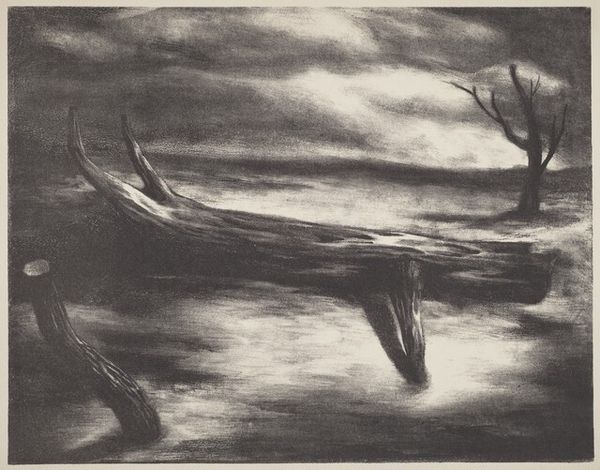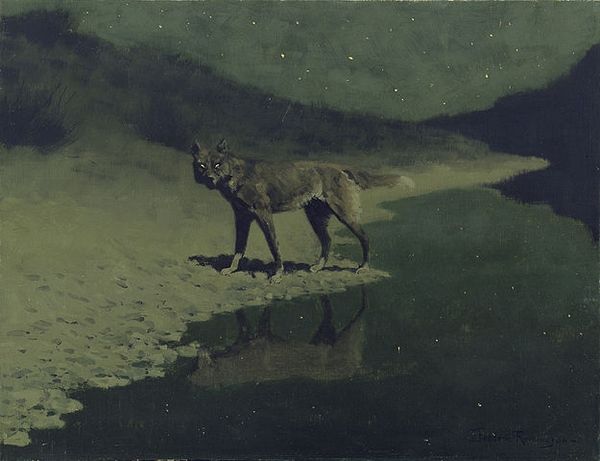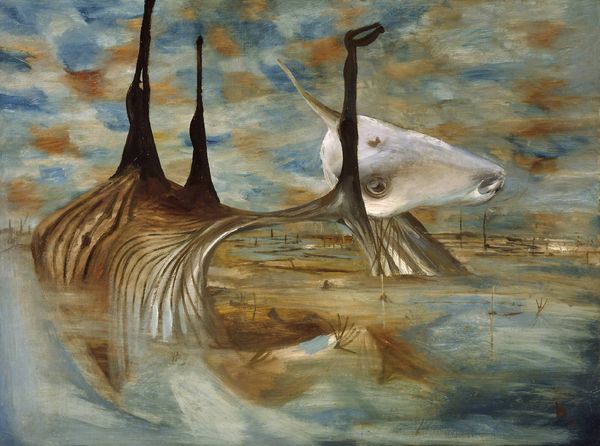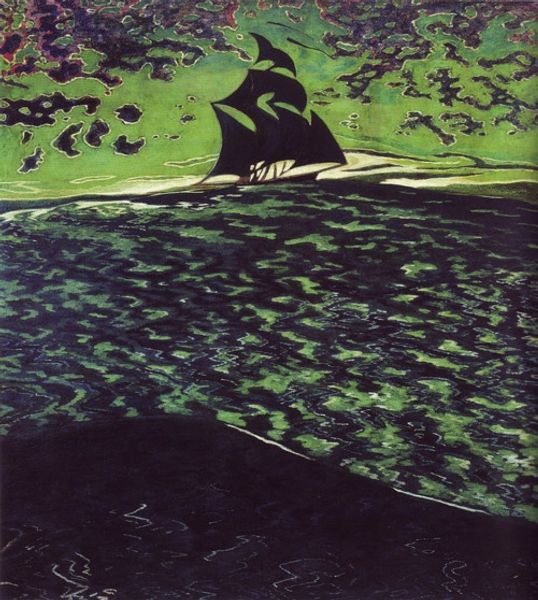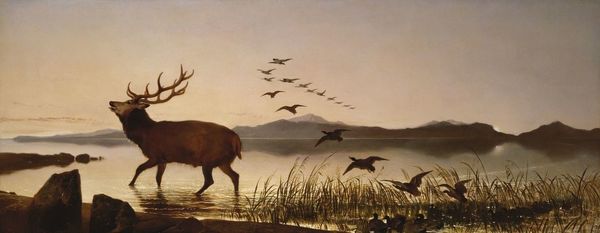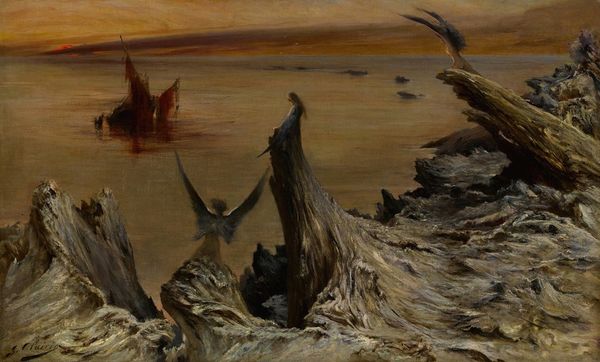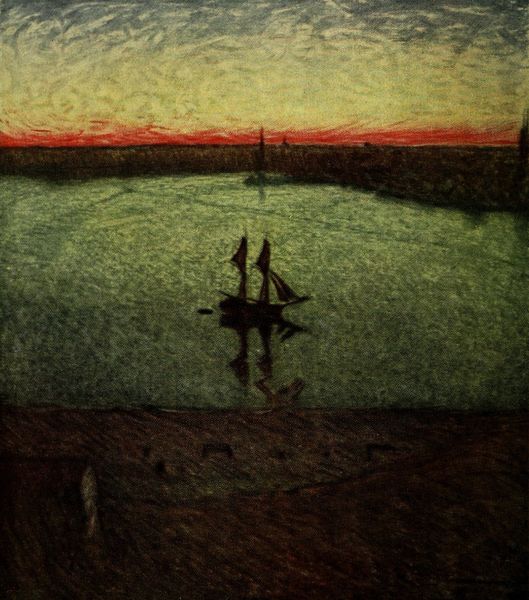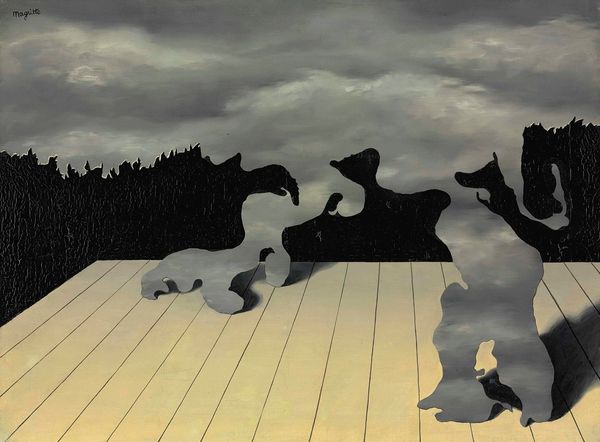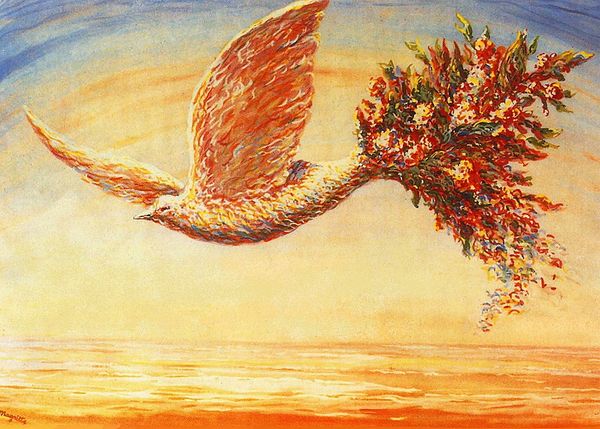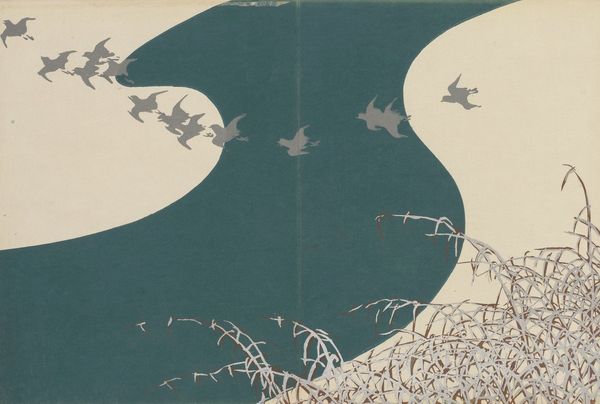
painting, plein-air, oil-paint
#
painting
#
plein-air
#
oil-paint
#
landscape
#
figuration
#
realism
Copyright: Public domain
Editor: Frederic Remington’s “Coming to the Call,” painted in 1905, is a striking oil on canvas. I am immediately drawn to the mood – this almost ethereal stillness. A solitary moose by the water is a striking subject of representation, particularly due to the tonality and its mirroring. What statements do you think this painting is trying to make? Curator: The ethereal quality you mention isn't accidental; Remington, later in life, moves towards tonalism. Think about the West he made a career depicting. Was it truly the rugged individualist landscape we see celebrated, or a site of profound and often brutal cultural clash and environmental exploitation? A canoe grounded ashore is reminiscent of displacement of indigenous groups and loss of culture through government policy that we continue to reckon with today. This painting becomes more complicated when viewed with the legacy and context of its creation. Editor: So, you're saying that his stylistic shift might reflect a deeper engagement with these socio-political issues? Curator: Absolutely. The reduction of detail, the emphasis on mood, can be interpreted as a visual critique of the mythology of the "Wild West," urging us to consider the costs of that expansion. Think about whose “call” is he referring to and how that relates to power structures and dispossession. Editor: It’s really interesting how his approach to painting can make this a potent social commentary. This makes me think about whose stories are prioritized and whose are silenced or altered in the artistic canon. Thank you! Curator: My pleasure! Remember that artworks are never neutral objects; they’re active participants in ongoing conversations about identity, power, and history. I am glad you’ve understood it that way.
Comments
No comments
Be the first to comment and join the conversation on the ultimate creative platform.
